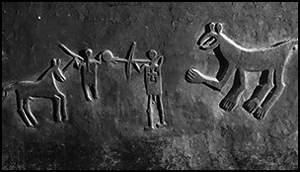Crossref Citations
This article has been cited by the following publications. This list is generated based on data provided by
Crossref.
Loiseau, Julien
Dorso, Simon
Gleize, Yves
Ollivier, David
Ayenachew, Deresse
Berhe, Hiluf
Chekroun, Amélie
and
Hirsch, Bertrand
2021.
Bilet and the wider world: new insights into the archaeology of Islam in Tigray.
Antiquity,
Vol. 95,
Issue. 380,
p.
508.
Insoll, Timothy
2021.
The archaeology of complexity and cosmopolitanism in medieval Ethiopia: an introduction.
Antiquity,
Vol. 95,
Issue. 380,
p.
450.
Blond, Ninon
Jacob-Rousseau, Nicolas
Bouchaud, Charlène
Callot, Yann
Curie, J.
Vandevelde, S.
Quiquerez, A.
and
Petit, C.
2021.
From section to landscape(s): reconstructions of environmental and landscape changes for the past 8000 years around the site of Wakarida (Ethiopia) using chronostratigraphy.
BSGF - Earth Sciences Bulletin,
Vol. 192,
Issue. ,
p.
53.
Kusimba, Chapurukha M.
2023.
Africa and Its Global Connections.
African Archaeological Review,
Vol. 40,
Issue. 4,
p.
777.
Marín-Aguilera, Beatriz
and
Dussubieux, Laure
2023.
Embodying Ethiopia’s Global Golden Age on the Muslim-Christian Frontier: The Allure of Glass Beads.
African Archaeological Review,
Vol. 40,
Issue. 2,
p.
317.
Muehlbauer, Mikael
2023.
An African “Constantine” in the Twelfth Century: The Architecture of the Early Zagwe Dynasty and Egyptian Episcopal Authority.
Gesta,
Vol. 62,
Issue. 2,
p.
127.
Binyam, Yonatan
and
Krebs, Verena
2024.
‘Ethiopia’ and the World, 330–1500 CE.
González-Ruibal, Alfredo
2024.
Landscapes of Memory and Power: The Archaeology of a Forgotten Kingdom in Ethiopia.
African Archaeological Review,
Vol. 41,
Issue. 1,
p.
71.
González-Ruibal, Alfredo
2025.
Colonies and colonialism in the Horn of Africa: from the first millennium BC to the nineteenth century.
Azania: Archaeological Research in Africa,
p.
1.
Routhiau, Manon
2025.
Adadi Maryam: a new perspective about the southernmost rock-cut church in the Ethiopian Highlands.
Azania: Archaeological Research in Africa,
p.
1.
